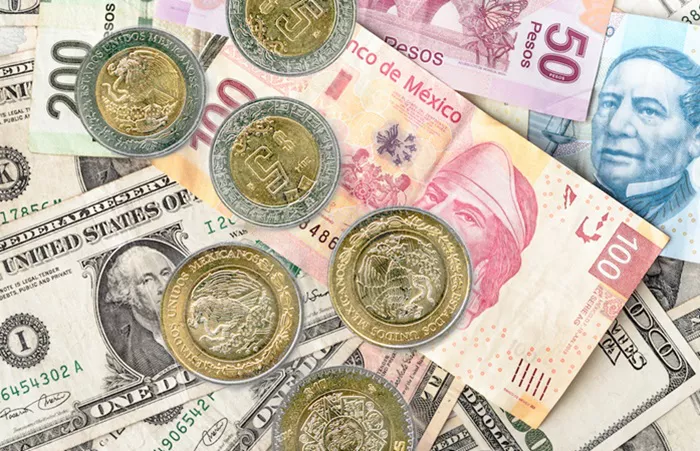The Mexican peso demonstrated resilience on Thursday, maintaining stability against the U.S. dollar despite recent fluctuations that saw it briefly dip below the psychologically significant 19-peso threshold for the first time since August last year. The currency closed the day at 18.9210 pesos per dollar, marking a marginal 0.01% increase—equivalent to less than one cent—which underscores a cautious and uncertain market climate influenced by ongoing international trade disputes and mixed signals from the U.S. economy.
Investor sentiment remains fragile as the market grapples with heightened geopolitical and economic uncertainties, most notably triggered by renewed tariff threats from former U.S. President Donald Trump. In a bold move, Trump announced plans to send “accept or reject” letters to leaders of key global trading partners in the coming weeks, issuing an ultimatum that demands agreement on trade terms by early July. Should negotiations falter, he warned, the U.S. would proceed with imposing tariffs, a prospect that has unnerved markets worldwide.
Data released by Mexico’s central bank, Banxico, revealed that the peso traded within a range of 18.8554 to 18.9810 pesos per dollar throughout the session, reflecting slight volatility but no decisive trend. Concurrently, the U.S. dollar index (DXY), which measures the greenback’s strength against six major currencies, retreated by 0.78% to close at 97.87 points, indicating a modest weakening of the dollar amid these developments.
Market analysts point out that while a preliminary trade agreement was announced following talks in London, investor confidence remains subdued. This caution stems from unresolved issues in the broader trade landscape, including ongoing U.S.-China negotiations, escalating conflicts in the Middle East, and the ever-present risk that tariff disputes may intensify. These factors collectively contribute to a risk-off environment, in which investors prefer to avoid speculative assets and maintain a conservative stance.
Compounding these geopolitical risks are mixed economic signals from the United States. Recent data from the U.S. Bureau of Labor Statistics showed that the Producer Price Index (PPI) increased by 0.1% last month, a figure slightly below economists’ expectations of a 0.2% rise. This modest inflation increase followed a 0.5% decrease in April, painting an inconsistent picture of price pressures in the economy. Such uneven inflation data adds to investor uncertainty, making it difficult to gauge the Federal Reserve’s next moves on monetary policy and further affecting market dynamics.
The combination of geopolitical tension, uncertain trade negotiations, and mixed inflation reports has suppressed appetite for riskier assets globally, resulting in muted currency market movements, including that of the Mexican peso. While the peso’s recent dip below 19 was notable, the currency’s subsequent stabilization suggests cautious optimism that Mexico’s economic fundamentals and trade relations will withstand these headwinds. However, analysts warn that ongoing uncertainties mean volatility could return if tariff threats materialize or geopolitical conflicts escalate further.
Related Topics:
Is Papua New Guinea’s Foreign Exchange Crisis Finally Over?
Forex Today: Markets Cautious Ahead of U.S.-China Trade Talks
Nepal’s Foreign Exchange Reserves Reach Record High on Remittances

